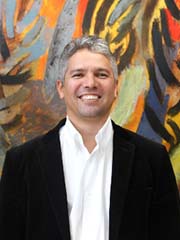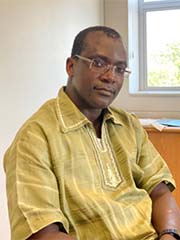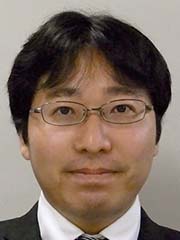Lead Members of the project were introduced! (2022-12-19)
Lead members introduce the project with their expertise. The project aims, objectives and expected contribution are illustrated more precisely.
Dr Henry ROMAN (Project Director - South Africa)
Q: Please tell us your background.
I have a PhD in Biotechnology from Rhodes University, Grahamstown, Republic of South Africa (RSA). My thesis was on the Bioremediation of Acid Mine Drainage (AMD) using Lignocellulose as a substrate for Sulphate-Reducing Bacteria under Anaerobic Conditions. At the Department of Science and Innovation (DSI) I also hold the role of National Designated Entity (NDE-RSA) for the UN Climate Technology Centre and Network (CTCN). In 2016 under the CTCN the precursor to this project was funded entitled ‘Substantial GHG Emissions reduction in the cement industry by using waste heat recovery combined with mineral carbon capture and utilization’. That project was the foundation for the application to SATREPS for further funding. As the NDE-RSA I was responsible for overall project management of the project.
Q: What is your expertise in the project?
I am what is called the Project Director. This means that I am responsible for the delivery of the South African side of the project. I also have a technical background in the treatment of AMD, which is one of the aspects to be addressed through this project, the treatment of AMD.

Q: What will be achieved through the project?
This project is investigating a means to assist the cement and concrete sector in RSA to reduce their greenhouse gas (GHG) emissions through carbon capture and utilization of the byproducts. This will contribute to the Circular Economy ambitions of the RSA by reducing carbon emissions but also by creating value-added products that can contribute economically. This, if successful, will contribute to the Nationally Determined Contributions (NDC) of the RSA to reduce carbon emissions and contribute to a low-carbon society as envisaged in the National Development Plan.
Professor Tunde Victor OJUMU (Principal Investigator and Project Manager - South Africa)
Q: Please tell us your background.
I hold a B.Sc. (Hons.) in Chemistry with a first-class division from Obafemi Awolowo University (OAU) Ile-Ife, Nigeria and I completed M.Sc. and PhD in Chemical Engineering from OAU and the University of Cape Town respectively. My areas of research are Biohydrometallurgy and Environmental Engineering
Q: What is your expertise in the project?
My expertise relating to this project is on fly ash utilization and beneficiation. I have graduated a number of postgraduate students in different aspects involving fly ash utilization, beneficiation and its use in the treatment of acid mine drainage (AMD).
Q: What will be achieved through the project?
The project aims to reduce process-related CO2 emissions from the cement and concrete industries. Our strategy for achieving this is through the development of carbon recycling systems, including resource recycling loops. These include carbon/material recycling systems using a proposed mineral carbon capture and utilization (MCC&U) technology in the concrete and cement industries in South Africa. On this basis, we can make strides towards the achievement of a circular economy based on a decarbonized society.

Associate Professor Atsushi IIZUKA (Principal Investigator and Chief Advisor - Japan)
Q: Please tell us your background.
I earned my B.Eng. in Chemical Engineering from The University of Tokyo, Japan in 2001 and completed Ph.D in Environmental Systems in the same University in 2006. My area of research is Environmental Chemical Engineering.
Q: What is your expertise in the project?
My expertise relating to this project is on carbon dioxide (CO2) utilization by mineral carbonation and wastewater treatment. Combination of these will contribute to the CO2 reduction as well as environmental remediation. We aim to create a new circulation loop for the industry (circular economy).
Q: What will be achieved through the project?
The project is aiming to use mineral carbonation to reduce carbon emissions from cement industry and contribute to the circular economy with environmental purification materials. Related experimental facilities will be installed in South African Research Institutes. Joint research between two countries and activities towards social implementation of this technology will be conducted using the facilities with Japanese experts. I hope these activities will continue even after the project period.

